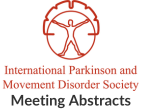A C12orf65 mutation-related autosomal recessive hereditary spastic paraplegia is associated with autophagy induction
Objective: Spastic paraplegia type 55 (SPG55) is an autosomal recessive complicated HSP caused by homozygous mutation in the C12orf65 gene (613541) on chromosome 12q24. The…Symptomatic palatal tremor following cerebellar stroke – Clinical and neuroimaging features
Objective: To study the clinical and neuroimaging features of patients presenting with palatal tremor following cerebellar stroke. Background: “Palatal Tremor” (PT) is recognised as one…Can a “Shopping bag Tremor” be a Pre-diagnostic sign of Parkinson’s Disease?
Objective: To describe an unusual wrist tremor according the existing classification and discuss its aetiological diagnosis. Background: Although Parkinson’s disease (PD) is usually associated with…Long-term course of a case with primary orthostatic tremor
Objective: To clarify the long-term course of a case with primary orthostatic tremor (OT) using surface electromyography (SEMG) and stabilometry. Background: OT is characterized by…Findings from a Community-Based Educational Event for Individuals with Parkinson’s Disease and their Families
Objective: The current proposal discusses findings from a one- day community-based educational event for participants with Parkinson's disease (PD) and their families living in a…Effects of deep transcranial magnetic stimulation of the cerebellum on cerebellar ataxias: A randomized, double-blind, cross-over clinical trial
Objective: To investigate whether cerebellar deep repetitive transcranial magnetic stimulation (d-rTMS) can improve ataxic symptoms when compared to sham stimulation. Background: Cerebellar ataxia remains a…An unusual phenotype of spinocerebellar ataxia type 12
Objective: To describe a case of spinocerebellar ataxia type 12 (SCA-12) with an unusual phenotype. Background: SCA-12 is a rare autosomal dominant cerebellar ataxia which…A Case of Disabling Orofacial Dyskinesias Caused by Lupus Anticoagulant
Objective: We describe a 93-year-old man with subacute, progressive onset of disabling orofacial dyskinesias (OD), found to have positive lupus anticoagulant (LA) and anti-beta2-glycoprotein IgA…An Open-Label, Phase 1b Study of the Neuroactive Steroid GABAA Receptor Positive Allosteric Modulator SAGE-324 in Essential Tremor
Objective: This single dose, open-label, Phase 1b study assessed the safety, tolerability, pharmacokinetics (PK), and pharmacodynamics (PD) of SAGE-324 in otherwise healthy patients with Essential…Prospective investigation of the frequency of tardive syndromes in outpatients attending two specialist psychiatry hospitals in Lagos, Nigeria
Objective: To determine the frequency and profile of TS in persons on antipsychotics attending tertiary psychiatry hospitals. Background: The term tardive syndrome (TS) encompasses the…
- « Previous Page
- 1
- …
- 71
- 72
- 73
- 74
- 75
- …
- 149
- Next Page »
